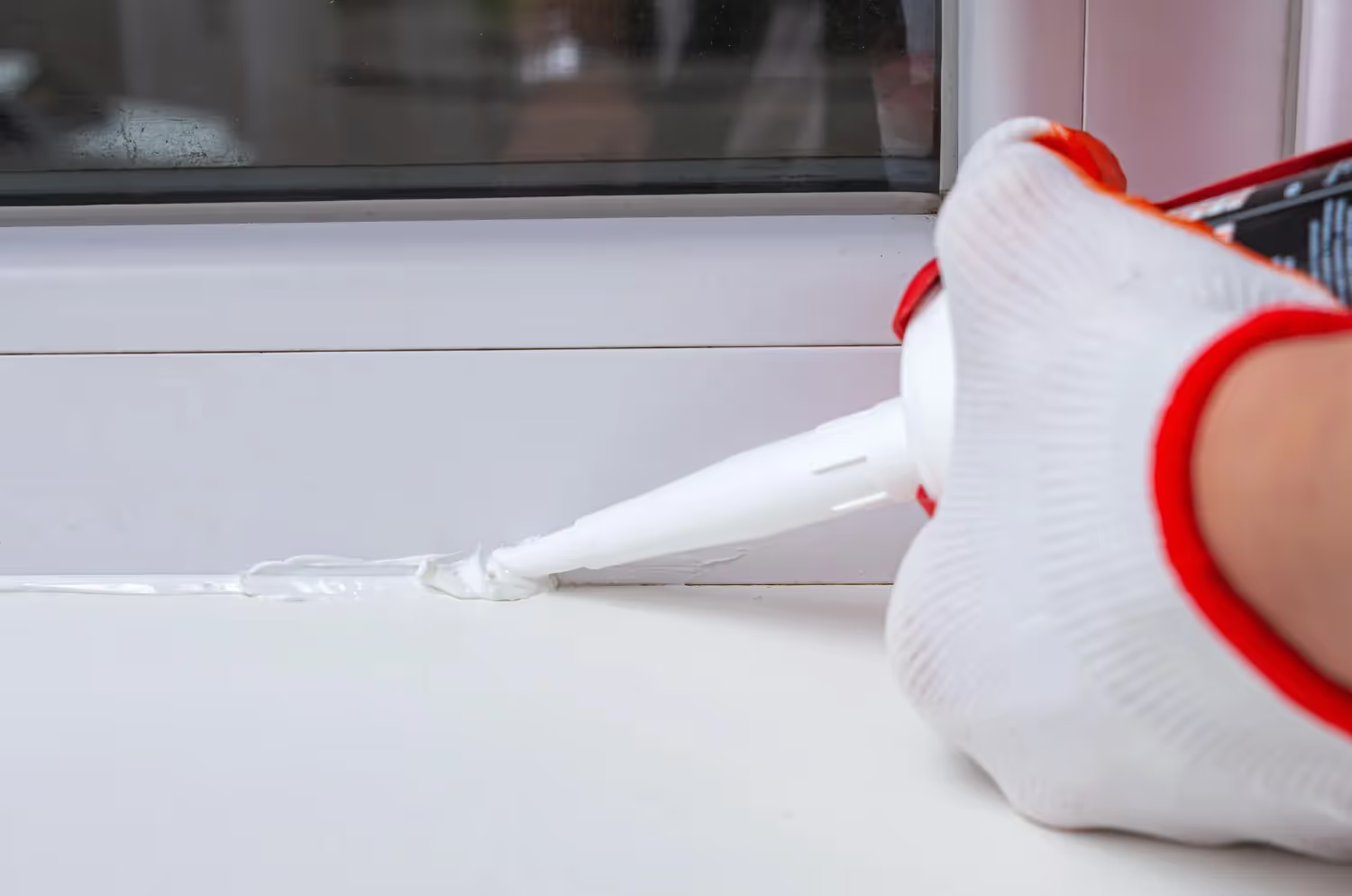

Window Leak Repair in Goodrich, TX
Window leak repair in Goodrich, TX by Spot On Pest Control, LLC. We diagnose and seal water intrusion sources. Learn your options—book your service today.

Window Leak Repair in Goodrich, TX
Window leaks in Goodrich, TX are more than a nuisance—they threaten your home’s structure, indoor air quality, and energy efficiency. With East Texas’ humid summers, frequent heavy rains, and periodic storm activity, even small failures in a window’s seal, flashing, or frame can lead to rot, mold, pest entry, and higher utility bills. This page explains how professional window leak repair works in Goodrich homes, what common problems look like, how leaks are diagnosed and fixed, and what aftercare prevents future damage.
Why window leaks matter in Goodrich, TX
- Humidity and storms increase the risk of trapped moisture and mold growth.
- Extended wet seasons accelerate wood rot in sills and frames, especially on older homes.
- Termites and carpenter ants are more active in East Texas; moisture around windows invites infestation.
- Air leaks from failed seals raise cooling costs during hot, humid summers common to Goodrich.
Understanding these local pressures helps prioritize repairs that protect both the envelope of the house and indoor comfort.

Common window leak issues in Goodrich, TX
- Failed sealants and caulking: Sun, humidity, and building movement break down exterior caulk and window sealants, allowing water to seep behind cladding.
- Damaged or missing flashing: Improper or deteriorated flashing around windows commonly directs water into walls rather than out.
- Rotted sills and frames: Persistent moisture causes wood decay, compromising structural support and making leaks worse.
- Broken or fogged insulated glass units: Seal failure between panes leads to condensation and can allow water intrusion at glazing stops.
- Improper installation: Windows not flashed or sealed to code let driving rain penetrate, especially during East Texas storms.
- Clogged weep holes and drainage channels: Exterior drainage systems become blocked with debris, trapping water.
- Interior condensation and high humidity: Condensation can mimic leak symptoms but may indicate ventilation or HVAC issues requiring remediation.
How we diagnose window leaks
A systematic diagnosis pinpoints the true path of water entry rather than treating symptoms. Typical diagnostic steps include:
- Visual inspection: Exterior and interior checks for cracked caulk, damaged trim, peeling paint, stains, and mold.
- Water testing: Controlled water tests replicate rain patterns to see where water breaches the assembly.
- Moisture mapping: Moisture meters and thermal imaging locate hidden wet pockets inside walls and sills.
- Flashing and cladding assessment: Inspecting the integrity and laps of flashing, siding, brick, or stucco to find bypasses.
- Window operation check: Evaluating sash fit, hardware, and movement that can open gaps during wind-driven rain.
Accurate diagnosis leads to targeted repairs rather than repeated patchwork.
Typical repair and remediation solutions
Repairs are tailored to the cause and extent of damage. Common solutions include:
Sealant and caulk replacement
- Remove failed caulk, clean substrate, and apply compatible, high-quality sealant suited for Texas climate and UV exposure.
Re-caulk interior seams that show gaps or shrinkage.
Flashing repair or replacement
- Replace damaged sill and head flashing; install proper step-flashing where required.
- Ensure flashing integrates with house wrap or building paper to create a continuous drainage plane.
Frame and sill repair or replacement
- Conservatively remove and replace rotted wood; epoxy or Dutchman repairs for limited rot.
- Replace entire unit when structural integrity or thermal performance is compromised.
Glazing and insulated glass repair
- Reglaze trim and replace failed insulated glass units to restore seal and reduce condensation.
- Upgrade to low-E or warm-edge spacers to improve energy efficiency in humid climates.
Drainage channel and weep hole clearing
- Clear clogs and ensure water can escape through designed paths. Repair exterior trim that blocks drainage.
Moisture remediation and mold control
- Dry affected cavities with fans and dehumidifiers, remove and replace wet insulation, and treat mold or mildew following best practices.
- Use moisture meters to confirm target dryness levels before closing walls.
Air sealing and weatherstripping
Add or replace weatherstripping, foam tapes, or gaskets to reduce infiltration and improve HVAC performance.
Impact on pests and energy efficiency
- Addressing water intrusion reduces attraction for termites, carpenter ants, and rodents that nest in damp wood. In Goodrich, where subterranean termites are common, moisture control around openings is a critical prevention step.
- Sealing failed windows reduces uncontrolled air exchange, lowering the load on air conditioning systems during hot, humid months. Proper glazing and repaired seals improve comfort and reduce long-term energy costs.
Aftercare and prevention
Maintaining repaired windows extends service life and prevents repeat leaks. Recommended aftercare for Goodrich homes includes:
- Regular inspections: Check caulk, paint, and flashing annually and after major storms. Re-caulk or touch up paint where gaps appear.
- Keep gutters and grading maintained: Ensure runoff directs water away from window sills and foundations to prevent splashback and saturation.
- Clear drainage paths: Remove debris from weep holes, window tracks, and trim that impede drainage.
- Control humidity: Use ventilation and dehumidification in kitchens, bathrooms, and during humid seasons to reduce interior condensation.
- Seasonal check after storms: Inspect windows after heavy rains or wind events common in East Texas for early signs of intrusion.
- Scheduled resealing: Exterior sealants typically need replacement every 5 to 10 years depending on exposure; track installations and plan reseal cycles accordingly.
Choosing the right repair approach for Goodrich homes
Repairs should prioritize restoring a continuous moisture barrier and ensuring proper drainage away from the window assembly. Given Goodrich’s climate, materials and sealants selected must resist high humidity, UV exposure, and insect pressure while allowing for expected house movement.
Timely, accurate window leak repair protects structural components, reduces mold and pest risks, and restores the energy performance of your home. Addressing leaks at the source—through proper diagnosis, targeted repairs, and consistent aftercare—prevents ongoing damage and preserves the value and comfort of homes in Goodrich, TX.
Window Leak Repair in Goodrich, TX That Stops Moisture & Infestation
Leaky windows can lead to energy loss, mold, and pest problems. Our skilled window leak repair in Goodrich, TX seals and protects your home from these hidden threats. At Spot On Pest Control, LLC, we deliver reliable fixes and offer custom maintenance packages for full-home protection. Schedule your service today.
Protect Your Home From Leaks & Pests With Expert Repair
Our Services
Our pest control services cover ants, termites, bed bugs, rodents, mosquitoes, and other common pests, with customized solutions for both residential and commercial properties.
.png)






